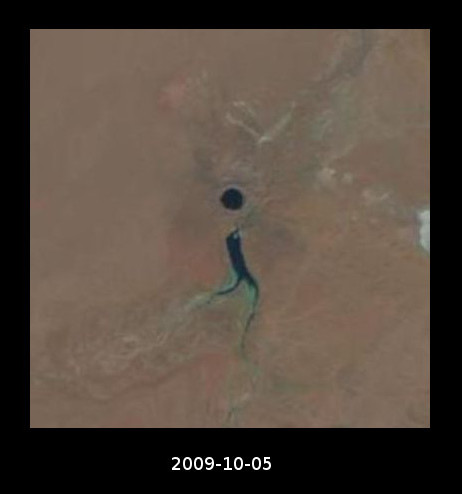Nuclear Weapons 308 - In 1965, The Soviet Union Created Lake Chagan In Kazakhstan With An Underground Nuclear Bomb
I recently wrote about the Soviet Union using a nuclear warhead to extinguish a fire in a natural gas well that had resisted all other attempts to put it out and had been burning for three years. While the U.S. and other nuclear nations considered the civilian use of nuclear warhead for such things as massive earthmoving projects, the Soviet Union was the most active nation in tested such uses. On one occasion, they created an artificial lake with a nuclear explosion.
The Soviet Union had a program called “Nuclear Explosions for the National Economy” established for the explicit purpose of testing civilian uses for nuclear bombs. The program carried out one hundred and fifty six nuclear tests between 1965 and 1989.
In 1965, a one hundred and forty kiloton nuclear bomb was detonated five hundred and eighty four feet under the dry bed of the Chagan River at Chagan which is on the edge of the Semipalatinsk Test Site in Kazakhstan. The blast resulted in the formation of a crater that was one thousand three hundred and twelve feet in diameter and three hundred and twenty eight feet deep. There was a “lip” around the crater that varied from sixty five feet to one hundred and twenty five feet high. A channel was cut a nearby river so that it could fill up the crater to create the new reservoir which was named Lake Chagan.
The purpose of the detonation was to determine whether nuclear explosions would be a good way to create new reservoirs. This test was carried out with the largest bomb ever used in the Nuclear Explosions for the National Economy program and it was the very first test carried out under the program.
It has been estimated that about one fifth of the radioactive isotopes created by the blast escaped from the underground cavity. Following the blast, radioactive fallout was detected over Japan, twenty five hundred miles to the east of the test site. In 1963, the Soviet Union had signed the Limited Test Ban Treaty (LTBT) which prohibited atmospheric detonations. The U.S. accused the Soviet Union of violating the treaty. The Soviet response was that the test was underground and the amount of radioactive materials released was not significant. Although the treaty did ban any detonations that caused radioactive materials to go beyond the borders of the country conducting the test, the potential violation of the LTBT by the Soviets was eventually dropped.
While Lake Chagan shows that it is indeed possible to create new artificial lakes with the use of underground nuclear explosions, it is not really practical because the water in Lake Chagan (also known as Atomic Lake) is still radioactive and unsuitable for the use of watering livestock. It would also not be a good idea to use the water for irrigation. Today, the water of Lake Chagan is about one hundred times as radioactive as the level considered safe for drinking water. Three hundred to five hundred feet from the reservoir, the level of radioactivity drops back to the normal background level.
Arial shot of Lake Chagan:
